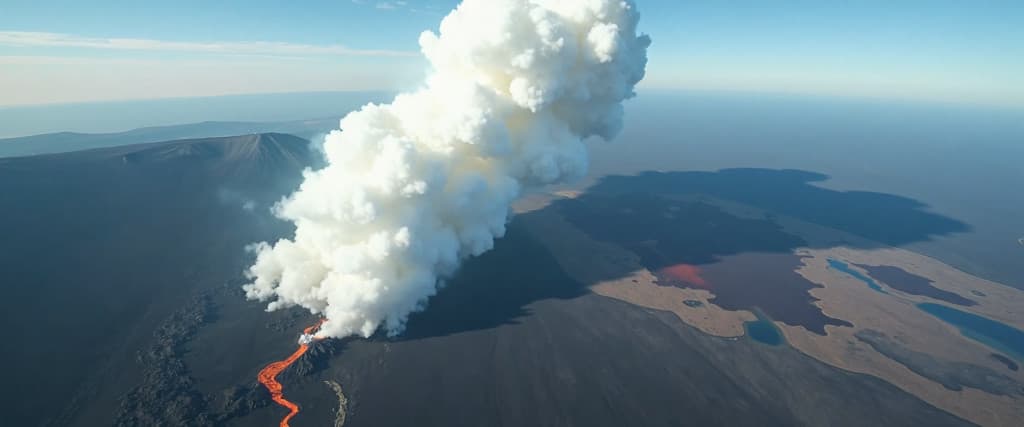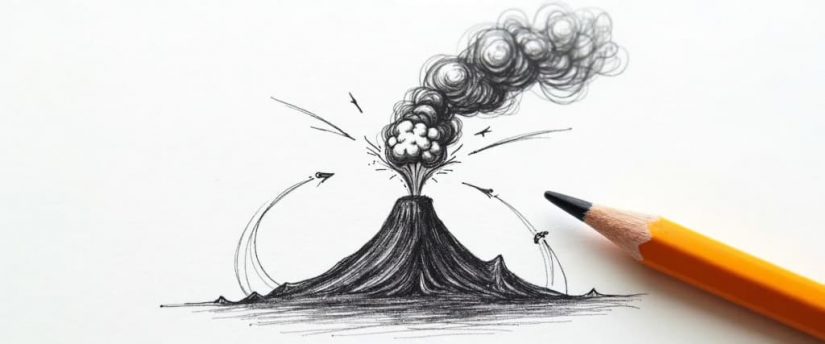Can you see a volcanic eruption before it happens? Yes — and not just through television or weather forecasts, but also through remote viewing. People who practice remote viewing have done it before. In 2022, Daz Smith, an artist, graphic designer, and professional remote viewer, described a volcanic eruption in Hawaii a full year before it actually occurred.
But can a non-professional do the same? Remote viewing works by tapping into the subconscious and expanding perception. Anyone can try it, but the key is being able to correctly interpret what you “see” in your mind’s eye. And, like any muscle, this skill needs regular training.
Where can you train? The easiest way is to use a tool designed specifically for developing these abilities. One of the best right now is Verevio — an intuitive app that teaches remote viewing step by step, entirely through practice. A short video tutorial explains everything in under a minute, and from there it’s all hands-on. It’s simple, clear, and easy to start.
By the way, this method works far beyond volcanoes. It’s used for predicting events, choosing places, people, or even decisions. If you want to hear yourself better, trust your intuition, and see a little further than others — we recommend this free remote viewing practice app.
How It Works

Remote viewing is a technique where a person attempts to gather information about a location, event, or object without using the physical senses — instead relying on mental impressions, imagery, and intuition.
When applied to volcanic eruptions, a trained remote viewer focuses on a specific target (such as a volcano at a certain future time) and records any sensory details, shapes, colors, or movements that appear in their mind. These impressions might include:
- Visual cues like rising smoke, glowing lava, or ash clouds.
- Sensations of heat, vibration, or pressure changes.
- Emotional impressions such as urgency or tension in the environment.
In theory, if multiple viewers report similar patterns — for example, a strong image of molten flow or explosive force — this could suggest an increased likelihood of volcanic activity in the target time frame. Experts in this field say this works by tapping into the subconscious, which might access information beyond normal perception. How can it be possible?
Volcanic Energy in Us
Ancient civilizations saw volcanic eruptions as the anger of the gods. They worshipped, feared, and respected volcanoes, often giving them human traits. Even today, with modern science able to track seismic activity, volcanoes still hold dangers and mysteries. Many people live in regions of high volcanic activity and have adapted to the environment. And if you think about it, humans and volcanoes have more in common than it seems. Strange as it sounds, some processes in our bodies work in ways similar to volcanic activity. A clear example is our body’s defensive reaction to inflammation, which raises body temperature. In those moments, we become like a living, glowing volcano. Fever is the immune system’s response to harmful factors such as viruses or bacteria — a heat surge designed to protect and heal us. This parallel makes it easier to imagine how a person with trained perceptual skills might sense volcanic unrest before it happens.
Hawai‘i’s Volcanic Past — And Why It’s Perfect for Remote Viewing
Hawai‘i’s volcanic activity is dominated by two active volcanoes — Kīlauea and Mauna Loa — with a well-documented eruption history. Kīlauea has seen frequent activity, including a major East Rift Zone eruption and summit collapse in 2018, followed by multiple summit eruptions in 2024 and continued lava fountaining episodes into 2025.
Mauna Loa, the largest volcano on Earth, erupted in 2022 from its summit caldera and Northeast Rift Zone, marking its first eruption since 1984, when lava flows came close to the city of Hilo. Historic records also note Mauna Loa eruptions in 1975, 1950, 1880–1881, and 1868, some of which threatened populated areas.
From a remote viewing perspective, Hawai‘i’s volcanoes offer an ideal target environment. Their eruptions are high-impact, visually distinctive events that can be independently verified through seismic data, satellite imagery, and eyewitness accounts. The frequent yet varied nature of activity allows remote viewers to test their perceptions against real-world outcomes within a relatively short time frame.
In Conclusion
In the end, while science continues to rely on seismic data, gas emissions, and satellite imagery to forecast volcanic activity, remote viewing could offer an additional layer of insight. As numerous examples show, science doesn’t always have all the answers, and many phenomena remain beyond our current understanding. That doesn’t mean these things are unreal or fabricated — rather, they simply haven’t been studied deeply enough yet.
